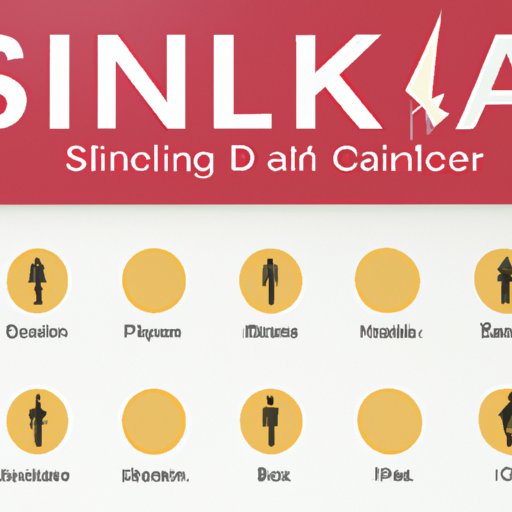
Introduction
Skin cancer is a common and serious condition that affects millions of people every year. The good news is that early detection can significantly improve the chances of successful treatment. In fact, skin cancer is one of the few types of cancer that can often be cured if detected early enough. This article aims to educate readers on the symptoms, identification tools, and preventative measures they need to know to detect skin cancer early and reduce the risk of advanced cancer.
Symptoms of Skin Cancer: Educating Yourself to Save Your Life
The most common symptoms of skin cancer include irregular moles, growths, and spots that change in color, texture, or size. Often, these symptoms are painless and may not be noticeable at first. That’s why it’s essential to regularly monitor your skin for changes and seek medical attention if you notice anything new or unusual. Protecting your skin from damage caused by the sun’s harmful UV rays is also crucial in preventing skin cancer. Wearing protective clothing, staying in the shade, and applying broad-spectrum sunscreen with an SPF of 30 or higher are just a few of the ways to protect your skin.
A Comprehensive Guide to Identifying Skin Cancer: What to Look For
There are three types of skin cancer: basal cell carcinoma, squamous cell carcinoma, and melanoma. Basal cell carcinoma is the most common type of skin cancer, with symptoms that include raised, pearly or translucent bumps, or a flat, pink patch that may resemble a scar. Squamous cell carcinoma typically appears as a hard, red nodule or a flat, scaly lesion. Melanoma is the most dangerous form of skin cancer, known for its ability to spread quickly to other parts of the body. The visual signs of melanoma include asymmetry, border irregularity, color variation, and a diameter greater than 6mm.
The ABCDEs of Skin Cancer: Using These Identification Tools to Stay Safe
The ABCDEs of skin cancer are a handy tool for identifying potential skin cancer. Asymmetry refers to a mole or growth that is irregular in shape. Border irregularity indicates that the edges of a mole or growth are undefined, notched, or scalloped. Color variation refers to any changes in color within the mole or growth, such as shades of brown, black, white, or red. Diameter greater than 6mm indicates that the growth or mole is larger than the size of a pencil eraser. Evolution means that the mole or growth is changing in shape, size, or color over time. By using the ABCDEs to monitor your skin, you can identify changes in moles and growths which may indicate the presence of skin cancer.
How Often Should You Conduct a Self-Skin Exam? A Guide for Preventative Measures
Regular self-skin exams are essential in reducing the risk of advanced skin cancer. The American Academy of Dermatology recommends conducting skin exams at least once a month and more frequently if you are at a higher risk of skin cancer. When conducting a skin exam, it’s important to check your entire body, including the hard-to-see areas such as your scalp, buttocks, and the soles of your feet. Recording the size, shape, and color of any moles or growths can help you detect changes over time more effectively. Additional preventative measures include minimizing exposure to UV radiation, using broad-spectrum sunscreen, and avoiding tanning beds.
Ask the Dermatologist: Identifying and Diagnosing Skin Cancer Quickly and Accurately
If you suspect that you may have skin cancer, it’s important to consult with a dermatologist who can evaluate and diagnose your symptoms correctly. Common questions people have about skin cancer include how to differentiate between benign and malignant growths. Dermatologists use various diagnostic tools such as biopsies and dermoscopy to accurately diagnose skin cancer and provide the appropriate treatment plan.
Current Skin Cancer Trends in the U.S.: What You Need to Know About Risks and Prevention
Skin cancer is the most common type of cancer in the United States, with over 5 million new cases diagnosed each year. Risk factors for developing skin cancer include age, genetics, and environmental factors such as exposure to UV radiation. Staying informed about current trends in skin cancer prevention and treatment is essential in reducing the risk of skin cancer.

The Importance of Early Detection: How to Reduce the Risk of Advanced Skin Cancer
Detecting skin cancer early is crucial in reducing the risk of advanced and potentially life-threatening cancer. Remember to monitor your skin regularly, conduct self-skin exams at least once a month, and consult with a dermatologist if you notice any changes in your skin. Reducing exposure to UV radiation, using sunscreen, and wearing protective clothing are all effective preventative measures.
Conclusion
Now that you have a better understanding of how to detect skin cancer early, it’s up to you to take action. Remember to regularly monitor your skin, conduct self-exams, and seek medical attention if necessary. Reducing the risk of skin cancer requires consistent effort and commitment to preventative measures. For more information on skin cancer prevention and treatment, consult with a dermatologist or visit the American Academy of Dermatology website.




